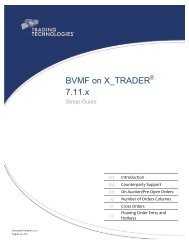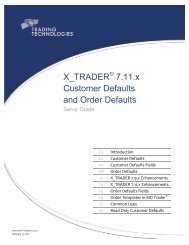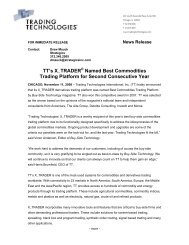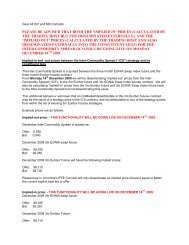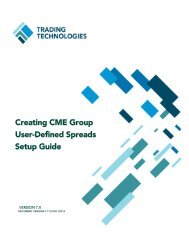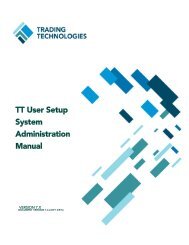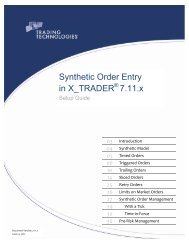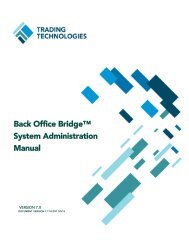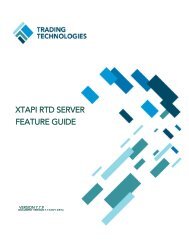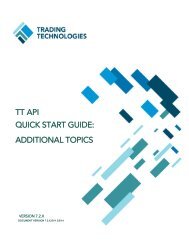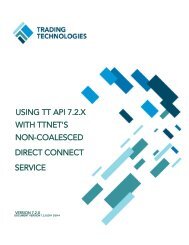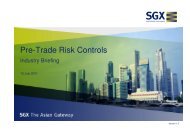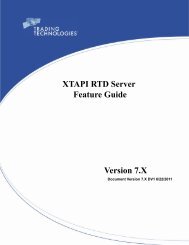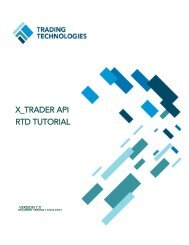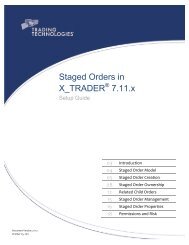Hardware and Software Requirements - Trading Technologies
Hardware and Software Requirements - Trading Technologies
Hardware and Software Requirements - Trading Technologies
Create successful ePaper yourself
Turn your PDF publications into a flip-book with our unique Google optimized e-Paper software.
NIC Setting<br />
Description<br />
Microsoft Quote: “Receive Side Scaling enables the receive<br />
processing of networking traffic to be load balanced across<br />
multiple CPUs by leveraging new hardware in the NIC. It will<br />
dynamically balance the load as either system load or network<br />
traffic patterns vary. Any application that has significant networking<br />
traffic <strong>and</strong> runs on a multiprocessor host will benefit<br />
from RSS.<br />
Receive Side Scaling = OFF<br />
To help ensure application compatibility <strong>and</strong> security protection,<br />
TCP connection setup is not offloaded to the network<br />
adapter, only TCP data transfer. If any security policies conflict<br />
with a request to offload data transfer, the network connection<br />
will not be offloaded to the NIC, <strong>and</strong> will instead<br />
remain on the host TCP/IP stack, to ensure the system maintains<br />
robust security protection.”<br />
Quote from Intel: “When Receive Side Scaling (RSS) is<br />
enabled, all of the receive data processing for a particular<br />
TCP connection is shared across multiple processors or processor<br />
cores. Without RSS all of the processing is performed by<br />
a single processor, resulting in inefficient system cache utilization.<br />
Note: This setting has no effect if your system has only one<br />
processing unit.”<br />
RSS has caused issues with drops, out of order <strong>and</strong> duplicate<br />
packets in 2003 SP2, <strong>and</strong> a recent article from Microsoft recommends<br />
disabling this setting.<br />
Flow control = OFF<br />
Enable PME = DISABLE<br />
This setting is used to allow the NIC to manage the data flow<br />
between two machines. TT disables this <strong>and</strong> allows the application<br />
to drive the data flow through Windows Scaling, TCP<br />
Window Size, etc.<br />
In the Adapter’s Advanced Settings, there is a setting titled<br />
“Enable PME.” When PME is enabled, you can enable Wake<br />
on Settings which explicitly allows wake up with a Magic<br />
Packet from shutdown under APM power management mode.<br />
TT does not want anything to interfere with the process of trading<br />
so this is set to be disabled.



